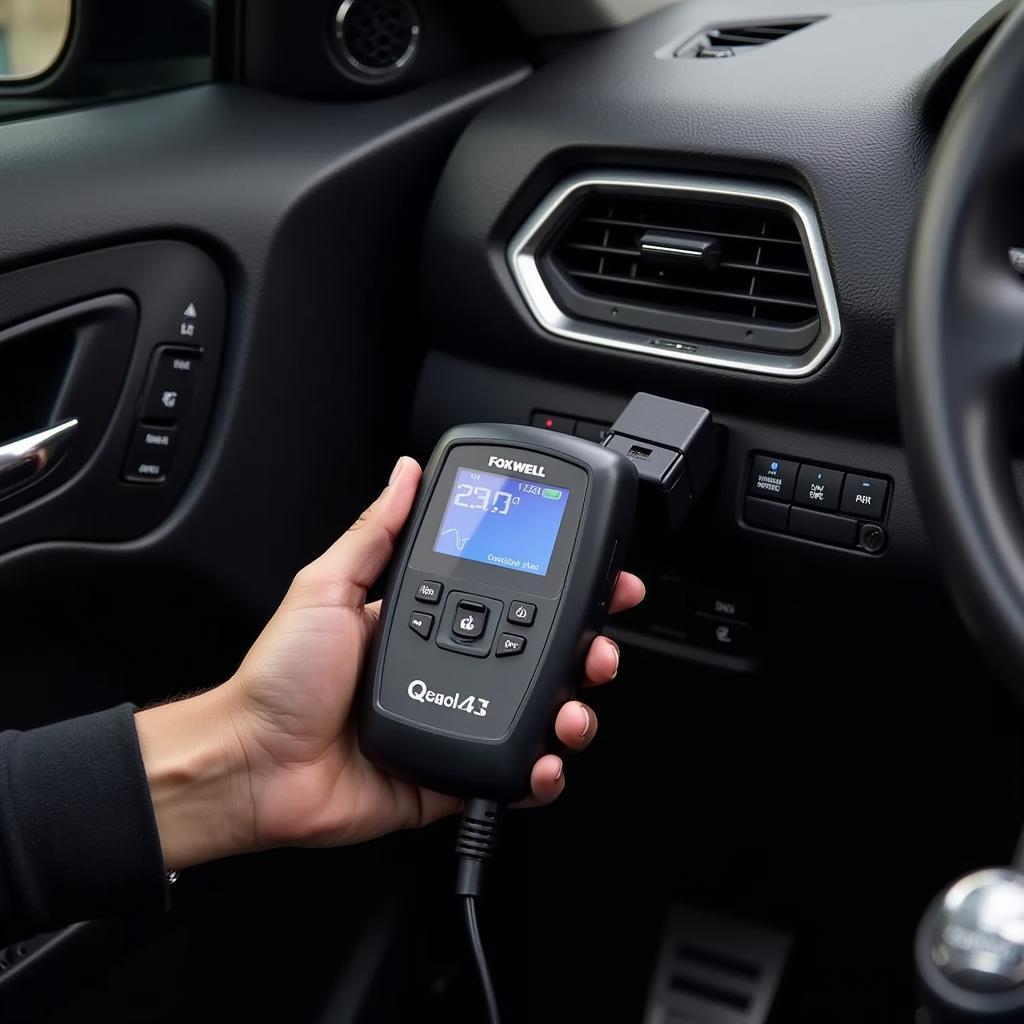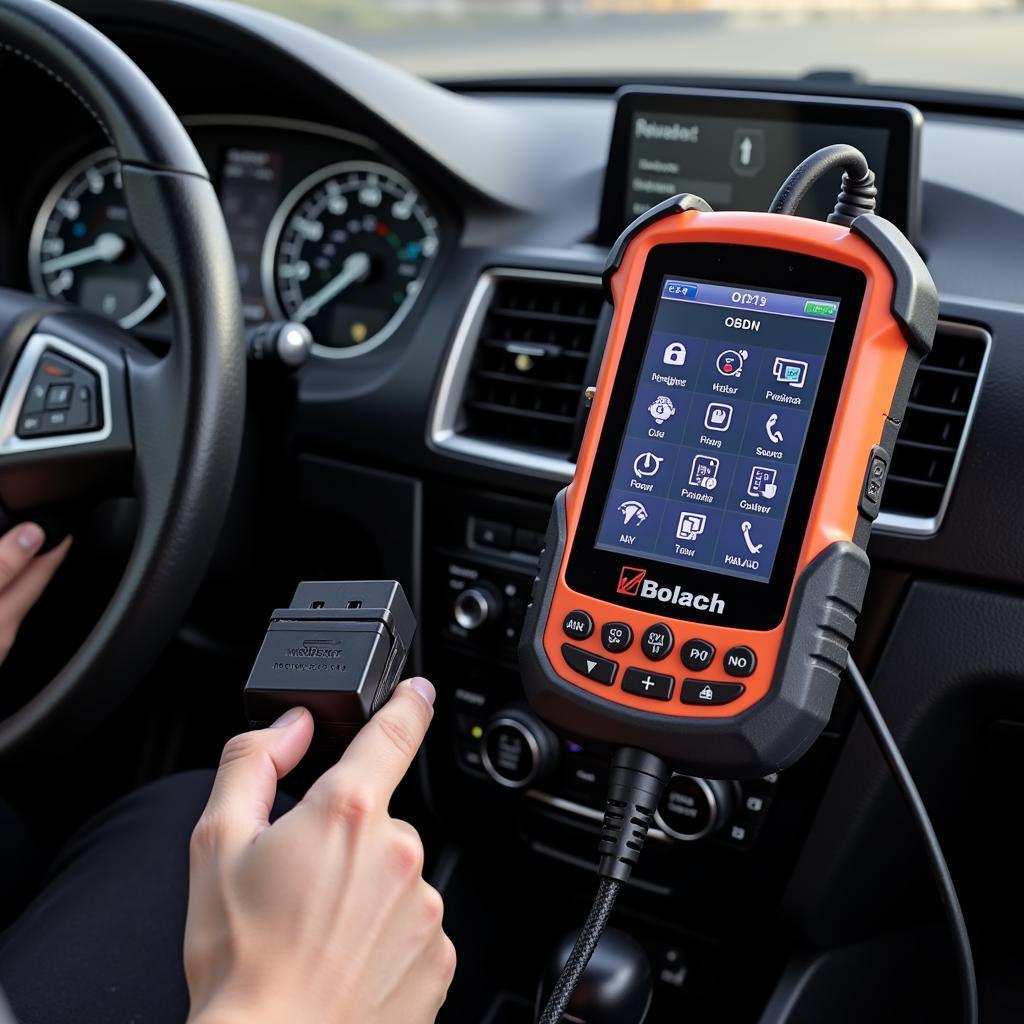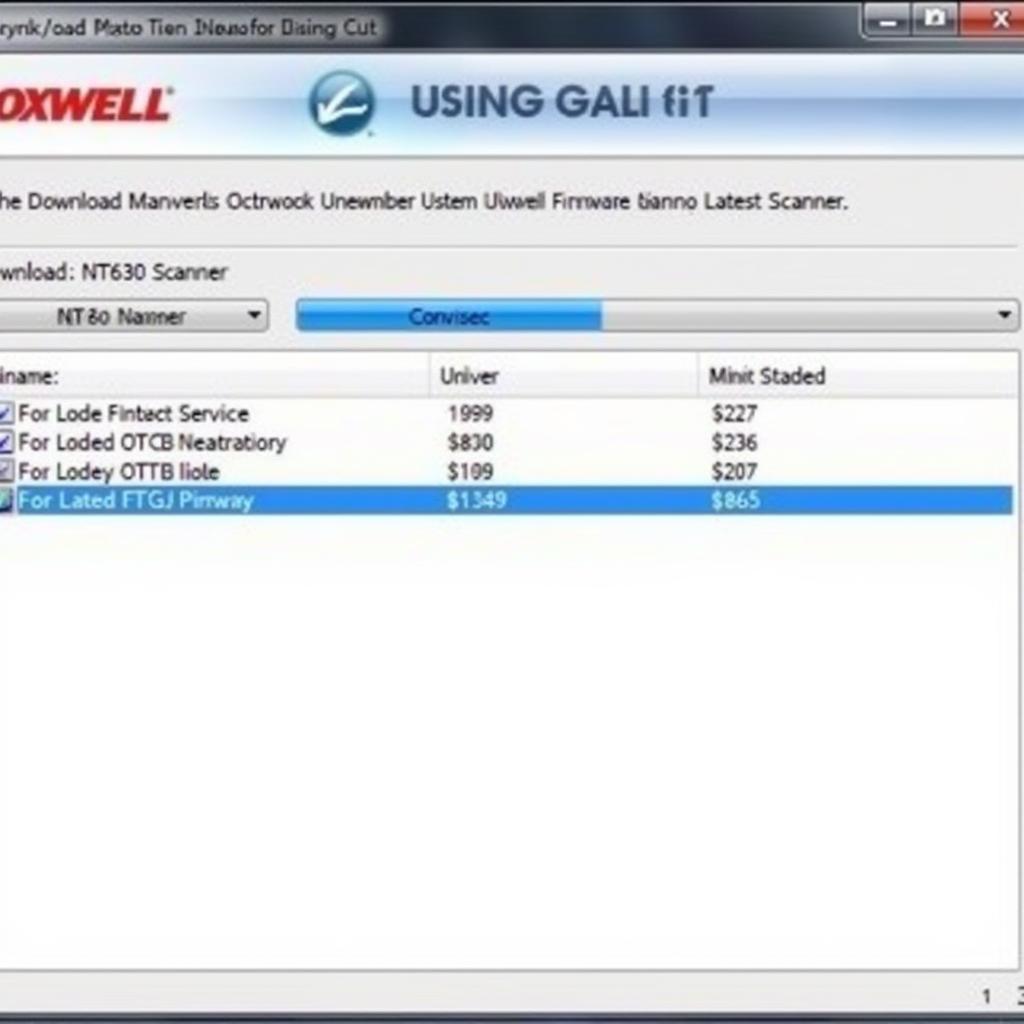The Foxwell NT630 is a powerful and versatile diagnostic tool that can be used to bleed your car’s ABS system. This comprehensive guide will walk you through the process of using the Foxwell NT630 for ABS bleeding, providing valuable insights and addressing common questions.
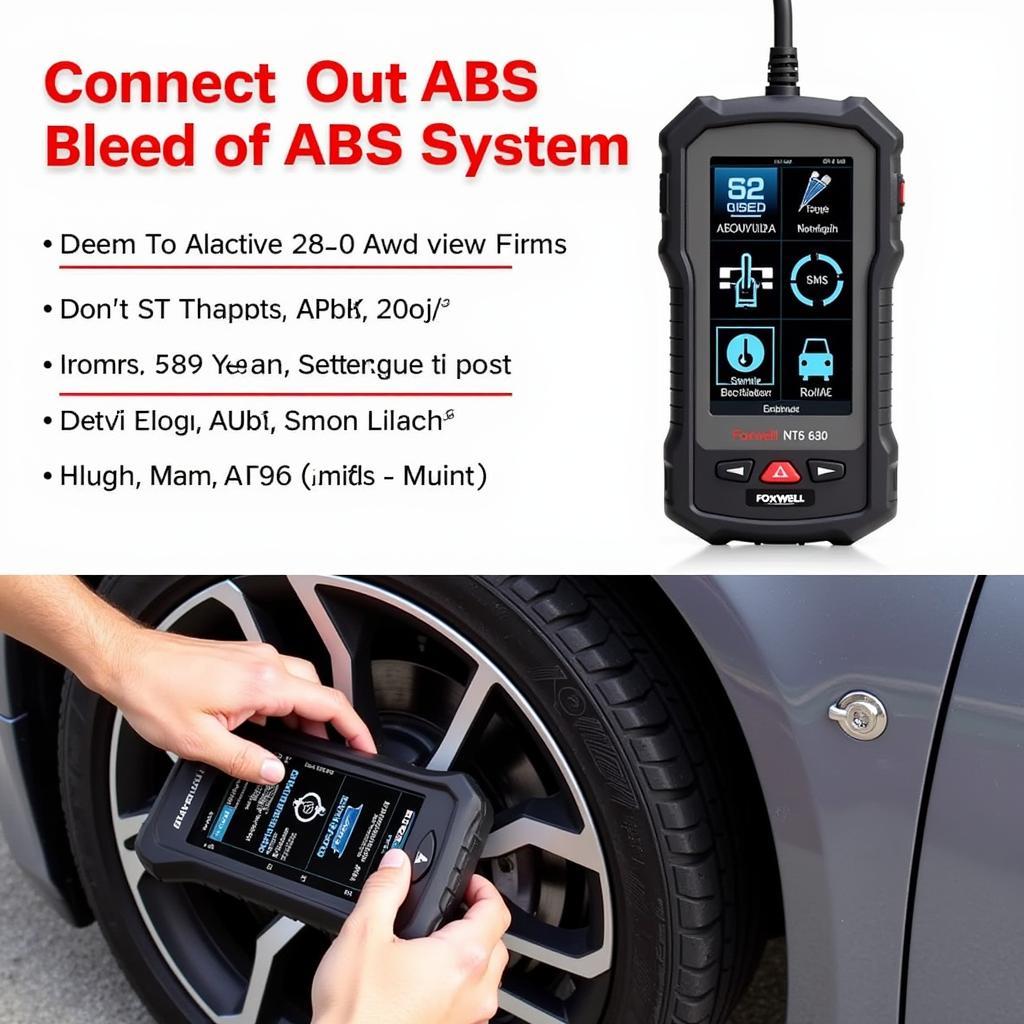 Foxwell NT630 ABS Bleeding Process
Foxwell NT630 ABS Bleeding Process
What is ABS Bleeding and Why is it Important?
ABS, or Anti-lock Braking System, is a crucial safety feature in modern vehicles. It prevents wheel lockup during hard braking, enhancing vehicle control and reducing stopping distances. The ABS system relies on hydraulic fluid to function correctly.
Over time, air can get trapped in the brake lines, leading to a spongy brake pedal feel and reduced braking efficiency. ABS bleeding is the process of removing this trapped air, ensuring optimal brake system performance.
When Should You Bleed Your ABS System?
Several situations may necessitate bleeding your car’s ABS system. Some common scenarios include:
- Replacing brake components: After replacing calipers, brake lines, or the master cylinder, air can enter the system.
- Spongy brake pedal: A soft or spongy brake pedal feel often indicates the presence of air in the brake lines.
- ABS warning light: If the ABS warning light illuminates on your dashboard, it’s essential to diagnose and address the issue, which might include bleeding the system.
- Routine maintenance: While not mandatory, many mechanics recommend bleeding your ABS system as part of regular brake fluid flushes.
Using the Foxwell NT630 for ABS Bleeding
The Foxwell NT630 is a highly capable diagnostic scanner that simplifies the ABS bleeding process. Here’s a step-by-step guide on how to use it:
- Vehicle Compatibility: Before you begin, verify that the Foxwell NT630 vehicle list for ABS bleed includes your specific car make and model.
- Connect the Scanner: Locate your vehicle’s OBD-II port and connect the Foxwell NT630 scanner.
- Power Up: Turn on the ignition but do not start the engine. Allow the scanner to establish a connection with your car’s onboard computer.
- Access ABS Module: Navigate to the “ABS” or “Brake” section within the scanner’s menu.
- Select “ABS Bleeding”: Choose the “ABS Bleeding” or “Automated Bleed” function. The scanner will guide you through the subsequent steps.
- Follow On-Screen Instructions: The NT630 will provide specific instructions tailored to your vehicle model. This typically involves opening and closing bleed valves in a particular sequence while the scanner activates the ABS pump.
- Monitor Fluid Level: Keep a close eye on the brake fluid level in the reservoir throughout the process. Refill as needed to prevent introducing air into the system.
- Complete the Procedure: Follow the on-screen prompts until the scanner confirms the ABS bleeding process is complete.
Foxwell NT630 Elite ABS Bleed: Advanced Features
The Foxwell NT630 Elite ABS bleed offers even more advanced features for efficient and effective ABS bleeding:
- Bi-directional Control: This allows the scanner to command the ABS pump and solenoids directly, ensuring a thorough bleed.
- Real-Time Data Display: Monitor key parameters like ABS pressure and solenoid operation in real-time during the bleed.
- Troubleshooting Codes: The NT630 Elite can read and clear ABS-related trouble codes, aiding in diagnosing any underlying issues.
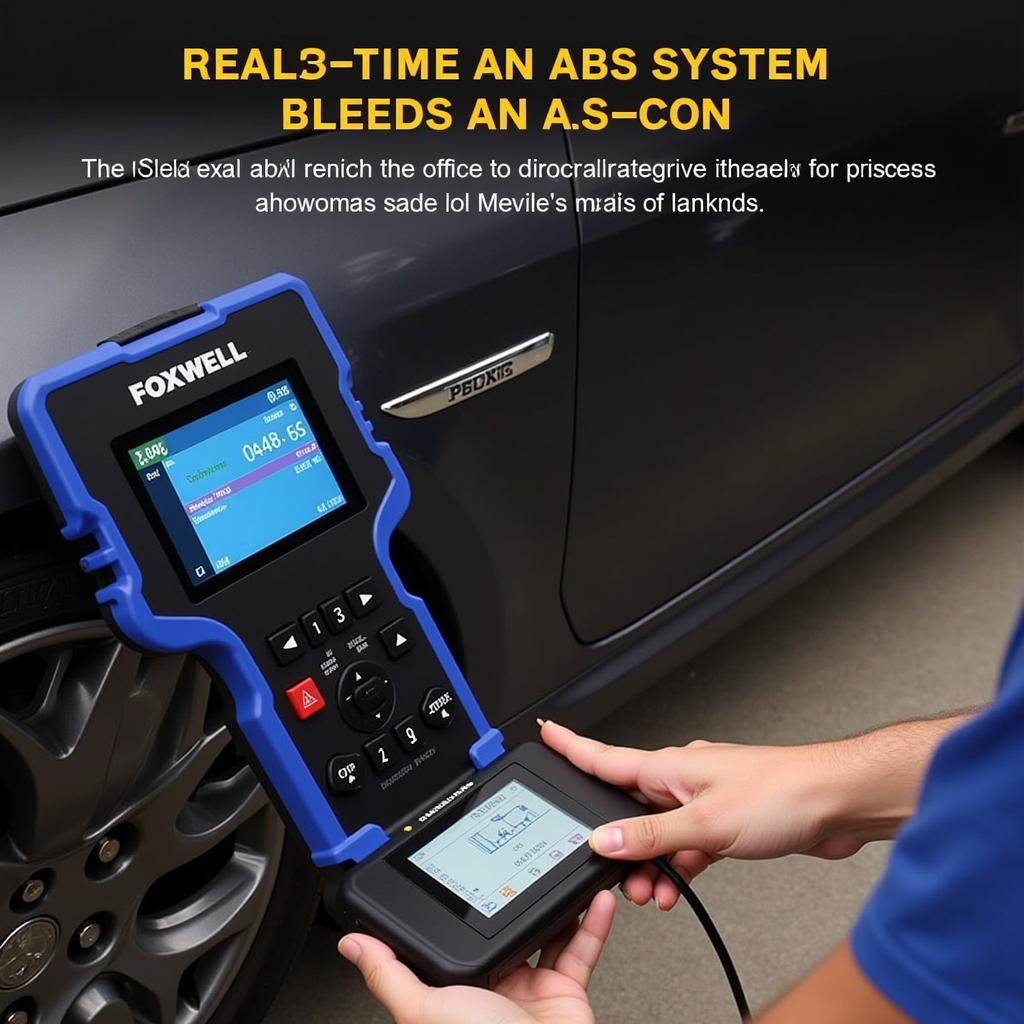 Foxwell NT630 Elite ABS System Bleeding
Foxwell NT630 Elite ABS System Bleeding
Foxwell NT630 Elite Mitsubishi ABS Bleed
The Foxwell NT630 Elite offers excellent compatibility with Mitsubishi vehicles, including those with complex ABS systems. Foxwell NT630 Elite Mitsubishi ABS bleed functionality makes it a valuable tool for Mitsubishi owners and mechanics.
Benefits of Using the Foxwell NT630 for ABS Bleeding
- User-Friendly Interface: The NT630 features an intuitive menu-driven interface, making it easy for both professionals and DIY enthusiasts to navigate.
- Time-Saving: Automated bleeding procedures significantly reduce the time required compared to traditional manual methods.
- Thorough Bleeding: Bi-directional control and precise activation of the ABS system ensure all air pockets are removed.
- Enhanced Safety: Properly bleeding your ABS system ensures optimal braking performance and safety.
Tips for a Successful ABS Bleed
- Consult Your Vehicle’s Service Manual: Always refer to your car’s specific service manual for recommended procedures and torque specifications.
- Use High-Quality Brake Fluid: Only use fresh, high-quality brake fluid that meets your vehicle manufacturer’s specifications.
- Work in a Clean Environment: Keep the work area clean to prevent contaminants from entering the brake system.
- Seek Professional Assistance: If you’re uncomfortable with the process, don’t hesitate to seek assistance from a qualified mechanic.
Foxwell NT630 Auto Bleed 2012 GMC Sierra
For owners of a 2012 GMC Sierra, the Foxwell NT630 auto bleed feature simplifies the process of maintaining their vehicle’s braking system.
Conclusion
Bleeding your car’s ABS system is crucial for maintaining optimal braking performance and safety. The Foxwell NT630 and NT630 Elite are powerful tools that simplify and enhance this process. By following the steps outlined in this guide and adhering to safety precautions, you can ensure a successful ABS bleed.
Need Assistance?
Contact ScanToolUS at +1 (641) 206-8880 or visit our office at 1615 S Laramie Ave, Cicero, IL 60804, USA.
FAQs
1. Can I bleed my ABS system without a scan tool?
While possible with some vehicles, it’s generally more challenging and time-consuming. Using a scan tool like the Foxwell NT630 simplifies the process and ensures a thorough bleed.
2. How often should I bleed my ABS system?
While not part of a standard maintenance schedule, it’s recommended to bleed your ABS system every 2-3 years or whenever you replace brake components.
3. Is the Foxwell NT630 compatible with all car makes and models?
The Foxwell NT630 supports a wide range of vehicles. However, it’s crucial to check the compatibility list or contact Foxwell to confirm compatibility with your specific car make and model before purchasing.
4. What type of brake fluid should I use for my car?
Always consult your vehicle’s owner’s manual or service manual for the recommended brake fluid type and specifications.
5. Can I damage my ABS system by bleeding it incorrectly?
Yes, it’s possible to damage the ABS system if the bleeding procedure is not performed correctly. If you’re uncertain, it’s always best to consult a qualified mechanic.

